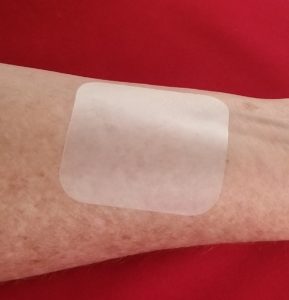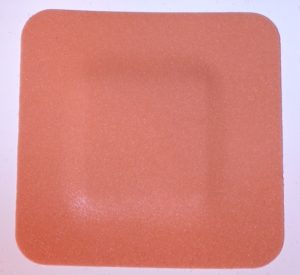We are often asked to compare monolithic patches and pad patches.
The two types of patches have very different features.

A monolithic patch has the active ingredient mixed directly with the adhesive. The active ingredients are suspended in the adhesive, and only some of these ingredients touch the skin directly. All of the ingredients are mixed together – so though you do have some active ingredients up against your skin, you also have some up against the film. This reduces the amount of active ingredient touching your customer’s skin.
Monolithic patches can be worn up to 36 hours. They allow you to print directly on the patch which maximizes your branding opportunities. Monolithic patches are completely flat. They are also less expensive than our pad patches. Monolithic patches are often chosen by customers wanting to produce a swift-acting, overnight effect.

A pad (or reservoir) patch can be worn substantially longer than a monolithic patch. Your customer will benefit from your patch for longer periods if you utilize a reservoir patch. Not only can pad patches be worn longer, more active ingredients can be included. Because the active ingredients are coated into the pad without the addition of adhesive, all of the active ingredients are in contact with your skin.
Pad patches are more expensive and aren’t as pretty, but are recommended for customers looking for more effective, longer term use.
When selecting your patch, it’s important to consider your desired result, and figure out what your potential customer is looking for. What experience do you want your customer to have? How long do you want your customer to experience the benefits of your active ingredients? How important is branding to you? All of these issues will help you decide whether monolithic or pad patches are right for you.
Here’s a decision tree that might help!